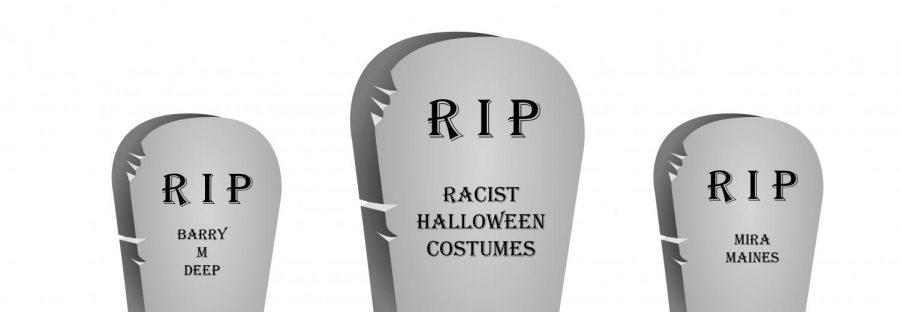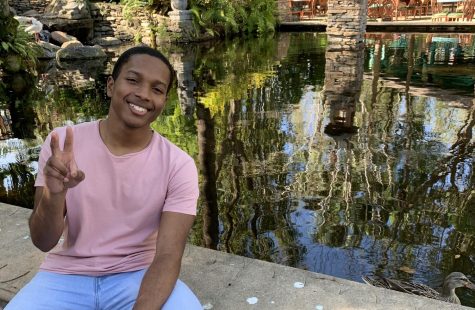Racist costumes plague the Halloween season
Artwork by Fletcher Cummings and Tyler Luker
Image representation of racist costumes needing to be put to rest.
October 22, 2019
Halloween is for celebrating the spookiest day of the year with friends, but racist costumes that perpetuate hate aren’t acceptable in any context.
Although most members of the student body find trick-or-treating too childish for their taste, costumes are still as much of the Halloween season as pumpkin flavored drinks and candy corn. Costumes are often encouraged to be worn to Halloween parties or any other event of the season. They should celebrate creative capacity rather than emphasize this country’s offensive past.
Native American costumes mock centuries of genocide and oppression by the US government. As the original inhabitants of this land, they deserve more than the strife they’ve endured since 1492. Celebrants of Halloween, Coachella or any other festival should not mock murdered, raped, and enslaved communities for the sake of an outfit.
People argue that dressing as a stereotypical colonial era Native American has the same guidelines as dressing as a pilgrim or throwing on lederhosen. This argument is invalid after considering that pilgrims and other colonists are widely considered to be brave or heroic, while Native American costumes often emphasize that they are perceived as “savages.”
The various cultures of indigenous tribes should be respected and valued. Dressing in feathers and face paint highlights and mocks only one aspect of their culture. This completely ignores the oppression that currently faces Native American communities throughout America.
Dressing up as a favorite black pop culture figure like Snoop Dogg, Black Panther or Nicki Minaj is appropriate. If anything, it’s good to highlight prominent black figures. However, using makeup or paint to make someone’s skin seem darker is racist. Blackface has a long history in America. It began by white actors impersonating the racist caricature “Sambo” in the 19th century.
The entertainment industry has a long history of casting white actors to play characters of all different ethnicities. Occasionally, in movies like Othello (1965) or Aloha (2015), casting a white actor and altering their appearance to seem like they’re a different ethnicity isn’t done to mock the ethnicity in any way, however, this usually wasn’t the case in other movies.
Blackface, and any other form of ethnic altering, was usually used to mock minorities. This can be seen in films such as The Jazz Singer (1927) and Breakfast at Tiffany’s (1961). In movies like these, the stereotypes and struggles of minorities in America are exploited as jokes and leave members of such communities feeling unwelcome and disrespected. It is just as inappropriate now as it was then.
Whether or not a costume that uses blackface is meant to be racist or not, the history in America sets a precedent. Blackface is disturbing and serves as a painful memory to minorities of a time where mass discrimination and murder were socially acceptable. America should no longer tolerate the imitation of minorities, no matter the situation.
Instead, party-goers and trick-or-treaters alike could show respect for minority cultures by not dressing to mock them. Instead of mocking the death and oppression of minorities, celebrants can dress as a fictional character or an American icon.
Wearing blackface or a Native American ceremonial headdress is lazy and disrespectful. Over 100 million Native Americans and millions more of enslaved Africans (later to be oppressed African Americans) have fought, struggled and died for this country to be able to celebrate holidays like Halloween. It’s time for celebrants to show respect for their graves.



